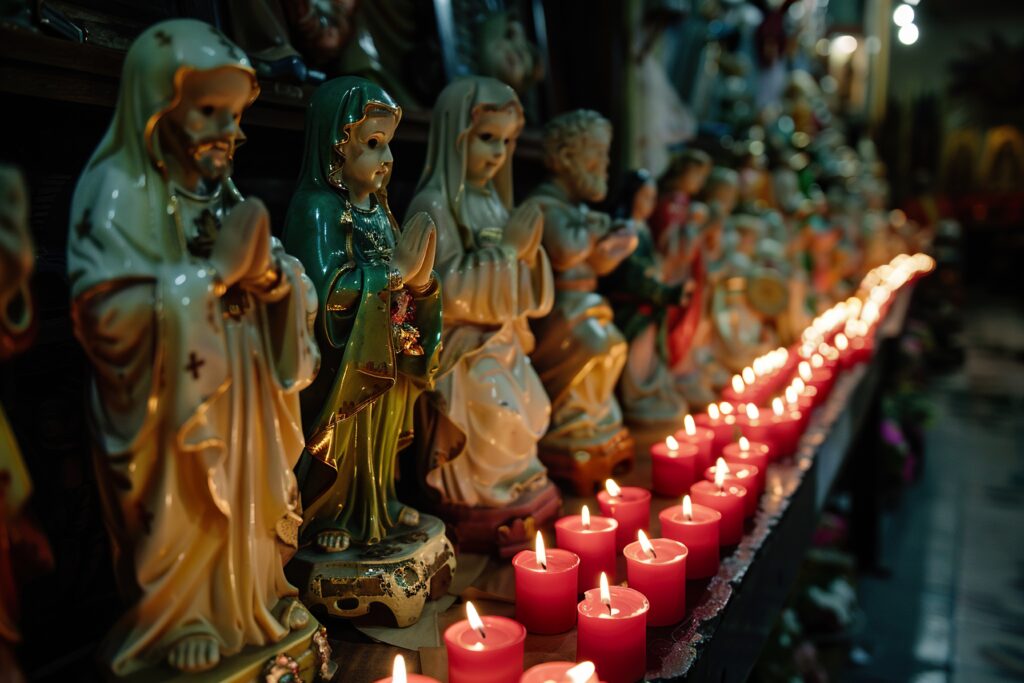All Saints’ Day (known as Ognissanti in Italian), celebrated on November 1st, is one of the most significant religious holidays in Italy. With its origins rooted in early Christian tradition, this feast day honors all saints, both known and unknown, and has evolved into a day of remembrance for the deceased. Although the holiday is celebrated (like Halloween) across many Christian countries, Italy’s unique customs and deeply rooted cultural traditions make it a special time of reflection and gathering.

The Origins of All Saints’ Day
The tradition of All Saints’ Day dates back to the early Christian Church. Initially, saints were honored on the anniversary of their martyrdom. However, as the number of martyrs increased during the Roman persecutions, the Church designated a collective day to honor all saints. Pope Gregory III established November 1st as the official day for All Saints in the 8th century, a tradition that Pope Gregory IV extended to the entire Catholic Church in the 9th century.
All Saints’ Day precedes All Souls’ Day on November 2nd, a day dedicated to praying for the souls of the deceased. Together, these two days form a period of remembrance, often referred to as Giorni dei Morti (Days of the Dead), in which families honor the dead by visiting graves and offering prayers.
Modern Traditions and Celebrations
Today, Ognissanti is both a solemn religious observance and a day for family gatherings in Italy. It is a public holiday, meaning schools and many businesses are closed, allowing families to come together. Although practices vary from region to region, the most widespread custom is visiting cemeteries to tend to the graves of loved ones. It is common for families to clean the gravesites and adorn them with flowers, especially chrysanthemums, which symbolize death and mourning in Italy.
Cemeteries across the country are transformed into seas of vibrant flowers, creating a striking and beautiful display of remembrance. Many Italians attend special Masses in churches or at cemeteries to pray for the souls of the deceased, reflecting the deeply religious nature of the holiday.
Regional Customs
While the core traditions of All Saints’ Day are observed nationwide, several regions in Italy have their own distinctive ways of celebrating.
- In Sicily, the holiday is known for a blend of sacred and more lighthearted customs. Children often receive gifts, traditionally said to be from their deceased relatives, a practice that ties together the idea of remembrance and generational continuity. Special sweets called Frutta Martorana, marzipan fruits, are given to children, symbolizing the harvest and the connection to the dead.
- In Veneto (the region that includes Venice), it’s customary for families to offer a meal to the deceased by leaving out food, such as bread or fruit, for spirits visiting the home. This act of hospitality connects the living with the dead, emphasizing the theme of familial bonds that extend beyond life.
- In Northern Italy, especially in regions like Piedmont and Lombardy, families gather for long, solemn processions to cemeteries, where prayers are offered to the saints and the departed. Churches hold services with candles, and entire towns often participate in the commemoration.
Celebrating Ognissanti in Italy Today
While Italy’s religious roots remain strong, today’s celebrations of Ognissanti also reflect a broader cultural shift. Italians increasingly embrace a more international style of celebrating the season, with Halloween gaining popularity in recent years. However, the reverence and deep respect for family and the deceased that is core to All Saints’ Day remains intact.
For travelers in Italy during this period, All Saints’ Day offers a profound glimpse into the heart of Italian culture. Cities like Rome, Naples, and Florence see their historic cemeteries and churches come alive with candlelight and flowers, creating a beautiful atmosphere for those looking to experience Italy’s religious and cultural traditions.
Conclusion: A Time of Reflection and Connection
All Saints’ Day in Italy is a day steeped in history, religion, and family tradition. Whether you’re visiting for the striking cemetery displays, participating in local religious services, or simply appreciating the cultural significance of the day, Ognissanti provides a unique insight into Italy’s spiritual life. With a rich blend of ancient customs and modern practices, All Saints’ Day remains a deeply important holiday, connecting past and present through remembrance and reverence.

